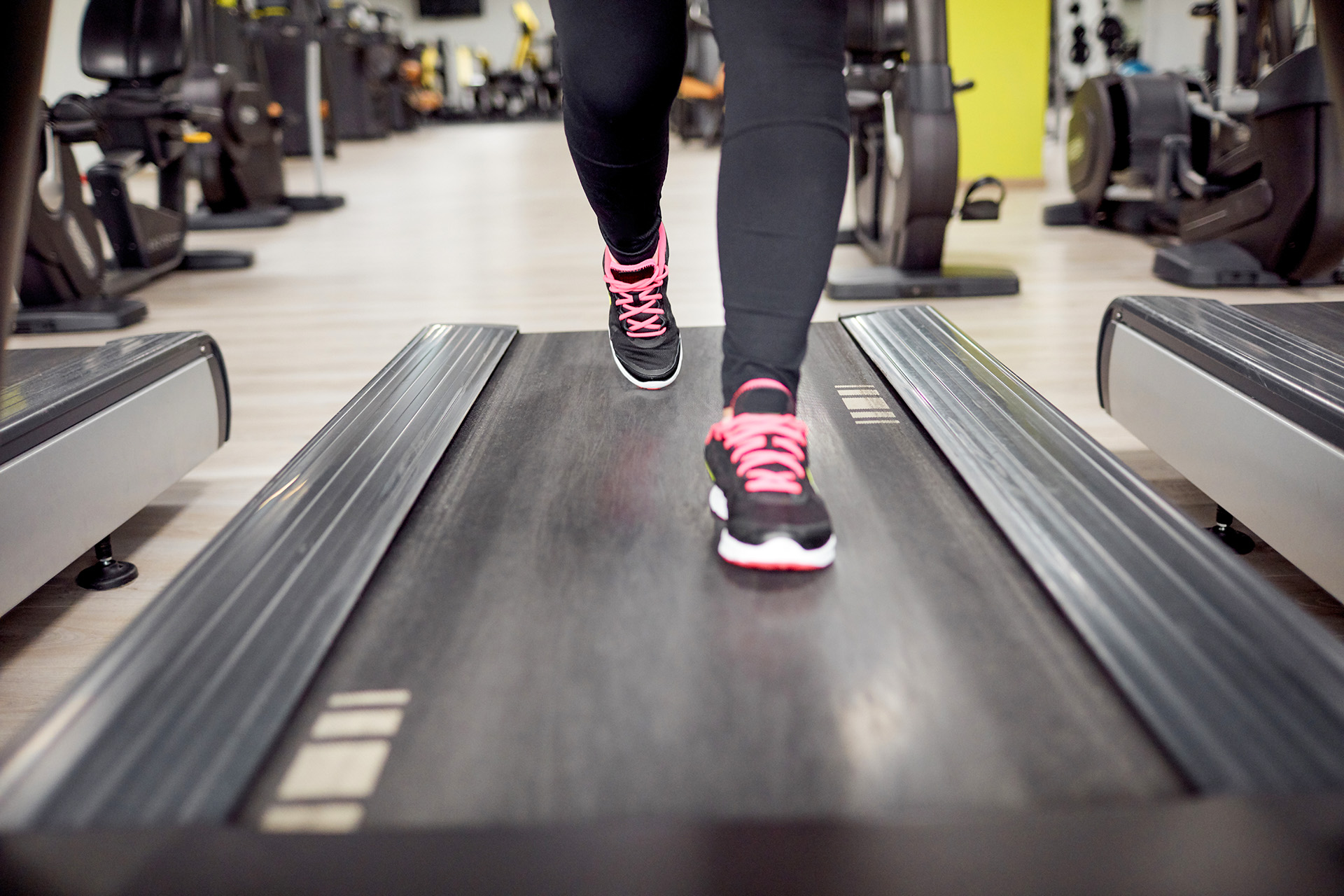Fitness
Fit for success: How exercise can improve employee engagement and job satisfaction

Whenever we think about the benefits of exercise, we always equate them with physical fitness and health. We think of how exercise helps us fight against health conditions and strengthen our physique. However, in recent years, significant parallels have been drawn between activity and its effects on mental health. It has been seen that one of the more immediate benefits of regular exercise is our mental wellness.
This implies that more exercise is directly linked to greater productivity, which is very relevant to our performance in the workplace. Incorporating regular exercise has cognitive benefits such as improved concentration, better memory, more accessible learning, better creative skills and lower stress levels. All of these have far-reaching implications when it comes to workplace performance. In this way, it can certainly be said that regular exercise is essential for improving employee performance, engagement and productivity.
This is one of the reasons many corporate offices have been promoting physical activity in the workplace. Office workers with access to a company gym reported managing their time more effectively, having better interactions with other employees and going home feeling more satisfied with their job.
Read more: The ‘Sunday scaries’ every day? Why 87% of employees dread work
What prevents employees from exercising more often?
Office workers sometimes say they do not get enough time to incorporate regular exercise into their routines. In some way, this does make sense. With tight deadlines and back-to-back meetings and calls, resting after going back home can seem like the only available option.
However, what they mean to say is that they do not have the time to devote to an activity that they do not consider a priority. And this is exactly where the effects of regular physical activity on employee engagement, performance and job satisfaction come into play. Exercise lets us be more productive, absorb and retain more information and release endorphins, which make us feel happy.
What most employees seem to think is that exercise is a luxury; one they cannot afford to devote time to. Therefore, instead of viewing exercise as something that takes away from daily work, it needs to be seen as a part of the work itself. Only in this way will employees understand the importance of keeping themselves in prime condition, which will definitely boost their work performance.
Some ways employees can be encouraged to exercise during the day
Flexible working hours
One of the best ways to encourage employees to maintain a work-life balance is to have flexible work hours. Giving people greater control over their work hours will improve performance and boost productivity. Breaking out of the traditional 9 to 5 routine can help in better employee engagement as well as retention. This way, employers can increase the productivity of their employees. Longer working hours, overtime and commuting can all be reasons that discourage employees from pursuing a healthy lifestyle.
Certain companies even allow employees to exercise during work hours, since it improves employee productivity and job satisfaction. Other companies offer subsidies on gym memberships. Flexibility in work times gives employees the space they need to handle their work-life balance and results in a more productive and happy workforce.
Read more: Can predictive tech help treat MSK and eliminate unnecessary surgeries?
Team activities
Working in a team is a great way to boost morale, improve collaboration and lead to better work performance. This can also be a wonderful way to motivate people to start exercising and keep at it. Companies can organise campaigns such as community volunteer activities, charity initiatives and monthly marathons, which can raise awareness about exercise and serve as a wonderful team-building project.
Active lunch breaks
Another excellent way to encourage employees to exercise and maintain their fitness is to promote more active lunch breaks. This means moving away from their desks. Encouraging employees to be more active during lunch breaks will help them collaborate better with their peers, achieve greater results at work and prevent the post-lunch slump that so many of us have experienced.
One of the main reasons why young employees have back and neck problems is the sedentary nature of their work. Encourage employees to exercise to strengthen lower back in between breaks or move around if they have been sitting for far too long.
The benefits of exercise in the workplace can be felt in several ways. Employers must understand that healthier employees translate to a more productive workforce. In addition to corporate drills, exercise can play a vital role in improving employee engagement, productivity, as well as job satisfaction at work.

Fitness
Sports Column: Finding the time to exercise in winter is difficult – The Vicksburg Post

Sports Column: Finding the time to exercise in winter is difficult
Published 4:00 am Sunday, January 19, 2025
Like a lot of people, I made a New Year’s resolution to exercise more, lose a little weight, and get into shape.
All right, “resolve” might be a strong word. Let’s call it a desire to get a little more value for my $50 a month gym membership than the once-a-month visits that became the norm in 2024.
For a while I’ve been stuck in the fitness paradox. When starting a regimen your muscles hurt after a workout so you want to rest, but the more you exercise the less they’ll hurt. Give it a couple of weeks and you’ll power through it.
It’s one of the biggest hurdles to getting into shape, and one I was reminded of again this week. I hit the pool for a modest 2,000-yard swimming workout, my first since Christmas, and had to grind hard to finish the last half of it. If I’d been in the water a couple times a week it would not have been nearly as taxing.
Time and work are big obstacles to exercising, of course. Especially this time of year. Getting home at 5 or 6 p.m. as the sun is setting and the temperature is dropping limits the neighborhood walks that are an easy way to burn calories. Covering a basketball game at Vicksburg High once a week and trekking up the hill from the parking lot in the dark isn’t going to cut it.
Another roadblock, for me at least, is other people.
I’m primarily a lap swimmer, so access to an indoor pool is the main reason I joined my gym. Unfortunately, it also means everyone else has access.
Besides other lap swimmers, that pool is used for children’s lessons and water aerobics classes.
When you lap swim you can’t see what’s in front of you — you look down, not ahead — so you’re trusting other people to watch out for you. Young kids trying to stay afloat have bigger concerns than avoiding you, so you need to develop a high level of ESP to avoid smashing into them like a torpedo into the side of a destroyer. It’s stressful.
The water aerobics folks have been nice and friendly when we’ve crossed paths — maybe a little too friendly. They tend to hang out and float for a while after their classes and get chatty. I don’t want to be rude, but also don’t want to swap life stories and recipes when I’m trying to stay on an interval and in rhythm.
The water aerobics folks have also scheduled thrice-weekly evening classes from 6 to 7 p.m., which is primetime for a post-work workout. I have to leave work early and go in the middle of the afternoon, or squeeze in a late swim and hope the gym managers don’t decide to lock up early.
Getting forgotten about and trapped in the pool overnight is a weird but not irrational fear, right?
I know there are more forms of exercise than swimming, and I probably need to explore those and stop making excuses. Hit the exercise bike or treadmill, for crying out loud. Lift a weight heavier than a 12-ounce Coke can.
Or just complain and rant. That burns calories, too.
•
Ernest Bowker is the sports editor of The Vicksburg Post. He can be reached at ernest.bowker@vicksburgpost.com
Fitness
Can a

Exercising regularly is important for preventing dementia. But if it’s hard to rack up the recommended amount of activity during the five-day work week (150 minutes of moderate-intensity activity, like brisk walking, or 75 minutes of vigorous activity, like swimming), consider the “weekend warrior” approach — fitting it all into one or two weekly sessions. The approach might offer the same brain health benefits, according to a study published online Oct. 29, 2024, by the British Journal of Sports Medicine. Researchers analyzed the health and self-reported activity information of more than 10,000 dementia-free people in Mexico who were followed for about 16 years. After accounting for factors that could influence the results, such as lifestyle habits, scientists found that weekend warriors were 13% less likely to develop mild cognitive impairment (MCI), a precursor to dementia, compared with people who didn’t exercise — about the same benefit seen in those who exercised during the work week. While the study was observational and can’t prove cause and effect, it supports the idea that even less frequent exercise might help protect brain health, and it might be a more convenient option for busy people.
Image: © Luis Alvarez/Getty Images
As a service to our readers, Harvard Health Publishing provides access to our library of archived content. Please note the date of last review or update on all articles.
No content on this site, regardless of date, should ever be used as a substitute for direct medical advice from your doctor or other qualified clinician.
Fitness
Fitness face-off – Harvard Health

What’s in style? The question doesn’t just relate to fashion. Indeed, even exercise styles go in and out of vogue, echoing trends fueled by social media and other cultural drivers.
Case in point: high-intensity bursts of exercise have grabbed headlines over the past couple of years, with scientists generating an array of studies examining the health benefits of short spurts of movement lasting from one to three minutes. That might consist of jumping jacks, lunges, running in place, jumping rope, air boxing, running up stairs, or any other high-intensity activity.
Meanwhile, plenty of research continues to focus on the health advantages of moderate-intensity, continuous movement. Mainstay choices for these sessions include brisk walking, cycling, jogging, and elliptical and treadmill use.
Given the swings in popularity between the differently paced alternatives, perhaps the most pressing question is which one is better for us. It might seem certain exercise patterns might prove superior to others, but we should resist the temptation to believe that, says Dr. Meagan Wasfy, a sports cardiologist at Harvard-affiliated Massachusetts General Hospital.
“There are always trends, and each one claims to be the latest and best way to move your body,” Dr. Wasfy says.
Breaking down the data
What health benefits does each approach offer? A sampling of recent studies and official health guidance weighs in.
Evidence supporting exercise bursts includes the following:
- A 2022 analysis of data collected on more than 25,200 people who didn’t otherwise exercise (average age 62, 56% women) published in Nature Medicine found that those who routinely did brief bursts of vigorous activity — defined as three bouts, each lasting a minute or two — had significantly lower odds of dying or developing cardiovascular disease over the following seven years than participants who didn’t.
- A 2023 analysis in JAMA Oncology of more than 22,000 people who didn’t exercise (average age 62, 55% women) suggested that even short, intermittent periods of intense movement — a minute at a time, three or four times a day — was linked with 18% lower cancer risk over the following 6.7 years, especially for cancers of the breast, uterus, or colon.
Evidence supporting longer, moderate-intensity exercise includes the following:
- Adults who do any amount of moderate-to-vigorous exercise derive health benefits, including reducing their risks of cardiovascular disease, diabetes, and some forms of cancer, according to the CDC.
- A 2022 analysis in JAMA Internal Medicine involving 78,000 people (average age 61, 55% women) found their risk of heart disease, cancer, and premature death dropped by 10% over the following seven years for every 2,000 steps they logged each day, with the benefit peaking at 10,000 steps.
Sense a theme from the findings? Regardless of intensity, it’s apparent that any movement is good for your health.
“No one comes out ahead with regards to the long-term outcomes,” Dr. Wasfy says. “What matters most is moving your body and doing more of it. The sum of movement, over the course of a year or decades of your life, is what matters.”
Exercise caveats
One clear advantage to exercise bursts — or its cousin, high-intensity interval training (HIIT) — is that any high-intensity activity enables you to fulfill recommended exercise guidelines in less time. Health organizations advise adults to get at least 150 minutes of moderate exercise or 75 minutes of vigorous exercise (or some equivalent combination of the two) per week. For an HIIT workout, you alternate vigorous, short sprints with brief periods of rest or lower-intensity movement.
“It’s a time-efficient way to get your recommended exercise dose in less time,” Dr. Wasfy says.
High-intensity exercise does pose a few drawbacks, however. These include a greater risk of injuries and inflammation to joints and muscles. Additionally, for people with heart disease or its risk factors, sudden bursts of exercise could be more likely to bring on new cardiac symptoms.
“If you’re writing an exercise prescription not knowing anything about someone’s health history, you’d write it for moderate-intensity, continuous exercise,” Dr. Wasfy says.
If you’d like to increase your exercise intensity but have existing heart disease — or symptoms such as chest pain with vigorous movement — talk to your doctor in advance. Older adults who’ve noticed their ability to exercise has declined should also speak up.
Ultimately, Dr. Wasfy says, you should choose a style of exercise you really like — and will do consistently — and disregard fitness trends. “If you’re healthy,” she says, “it’s really your choice.”
Image: © Luis Alvarez/Getty Images
-

 Science1 week ago
Science1 week agoMetro will offer free rides in L.A. through Sunday due to fires
-
/cdn.vox-cdn.com/uploads/chorus_asset/file/23935558/acastro_STK103__01.jpg)
/cdn.vox-cdn.com/uploads/chorus_asset/file/23935558/acastro_STK103__01.jpg) Technology1 week ago
Technology1 week agoAmazon Prime will shut down its clothing try-on program
-

 News1 week ago
News1 week agoMapping the Damage From the Palisades Fire
-
/cdn.vox-cdn.com/uploads/chorus_asset/file/25826211/lorealcellbioprint.jpg)
/cdn.vox-cdn.com/uploads/chorus_asset/file/25826211/lorealcellbioprint.jpg) Technology1 week ago
Technology1 week agoL’Oréal’s new skincare gadget told me I should try retinol
-
/cdn.vox-cdn.com/uploads/chorus_asset/file/25832751/2192581677.jpg)
/cdn.vox-cdn.com/uploads/chorus_asset/file/25832751/2192581677.jpg) Technology4 days ago
Technology4 days agoSuper Bowl LIX will stream for free on Tubi
-

 Business5 days ago
Business5 days agoWhy TikTok Users Are Downloading ‘Red Note,’ the Chinese App
-
/cdn.vox-cdn.com/uploads/chorus_asset/file/25835602/Switch_DonkeyKongCountryReturnsHD_scrn_19.png)
/cdn.vox-cdn.com/uploads/chorus_asset/file/25835602/Switch_DonkeyKongCountryReturnsHD_scrn_19.png) Technology2 days ago
Technology2 days agoNintendo omits original Donkey Kong Country Returns team from the remaster’s credits
-

 Politics1 week ago
Politics1 week agoTrump to be sentenced in New York criminal trial



/static.texastribune.org/media/files/6cd3698a19b71cb4773888da1521e24e/0805%20Mental%20Health%20File%20EG%2009.jpg)















